Interpretation Planning with Innocastle
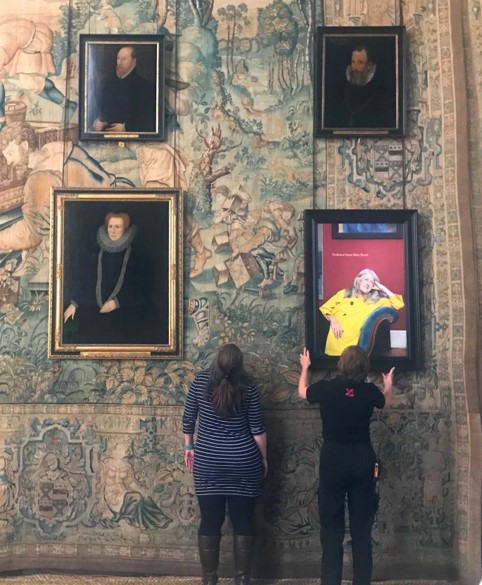
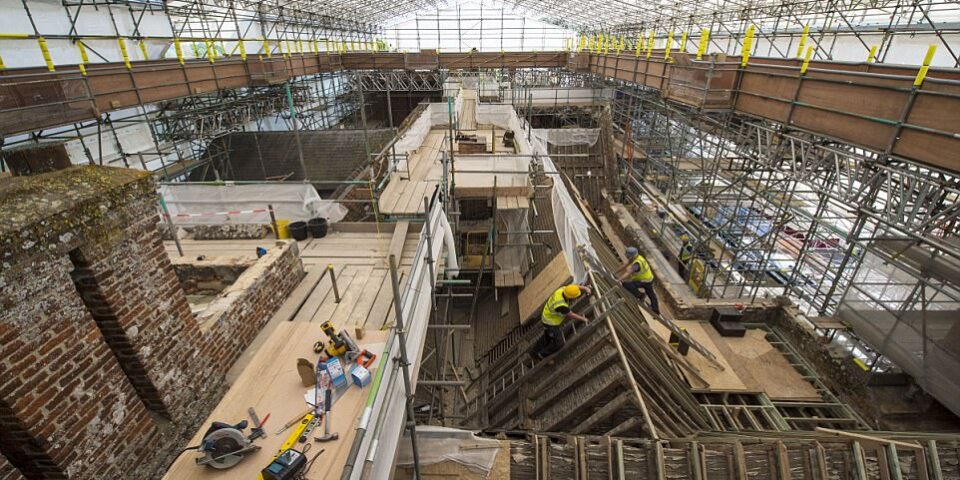
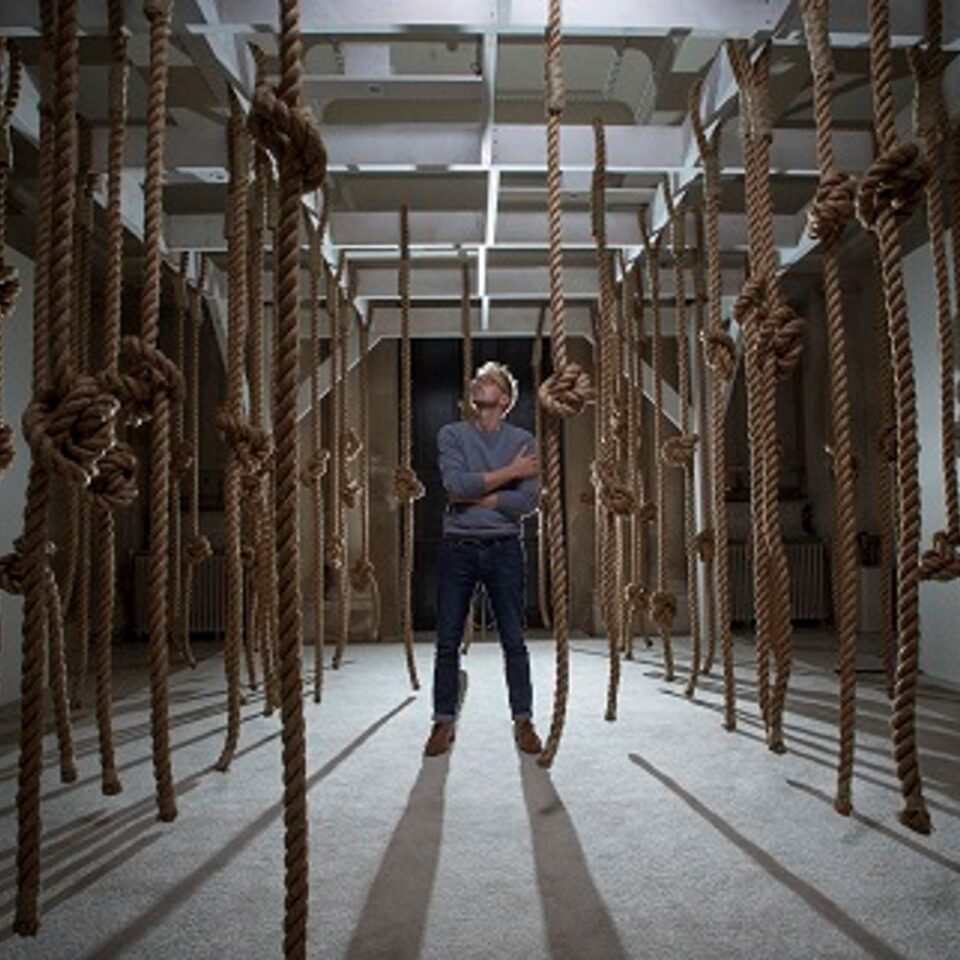
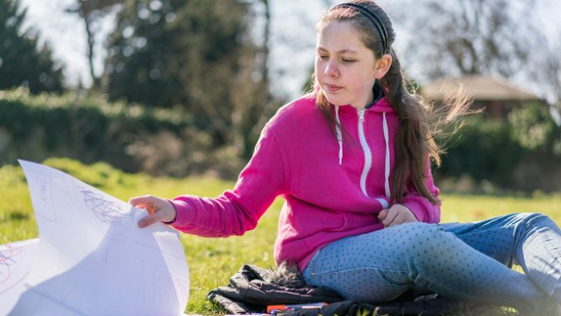
On 28 July, we hosted a webinar on Interpretation Planning, led by Tate Greenhalgh, Senior National Consultant – Interpretation at the National Trust of England, Wales and Northern Ireland. It was aimed at colleagues working in regional development roles in Romania and was a welcome practical outcome of the Innocastle project, full of ideas and tips. Some of which are shared below.
Our Romanian partners had been particularly struck by the work undertaken by the National Trust during their study visit to the UK in May 2019. Particularly around interpretation and programming at heritage sites.
Tate began the workshop with a fascinating introduction to interpretation: what it is and why we do it. For the National Trust, it’s an important part of the organisation’s purpose and strategy. It’s vital to helping people who visit places develop their relationship with the site, linking closely with visitor service and accessibility.
What is interpretation?
The National Trust’s ‘teach, move, inspire’ approach embraces the thinking of Tilden Freeman, who wrote extensively about the subject of interpretation. As heritage organisations, we need to do so much more than just convey information. We must reveal meaning, stimulate interest and motivate further action.
Here’s an example of the difference between information and interpretation:
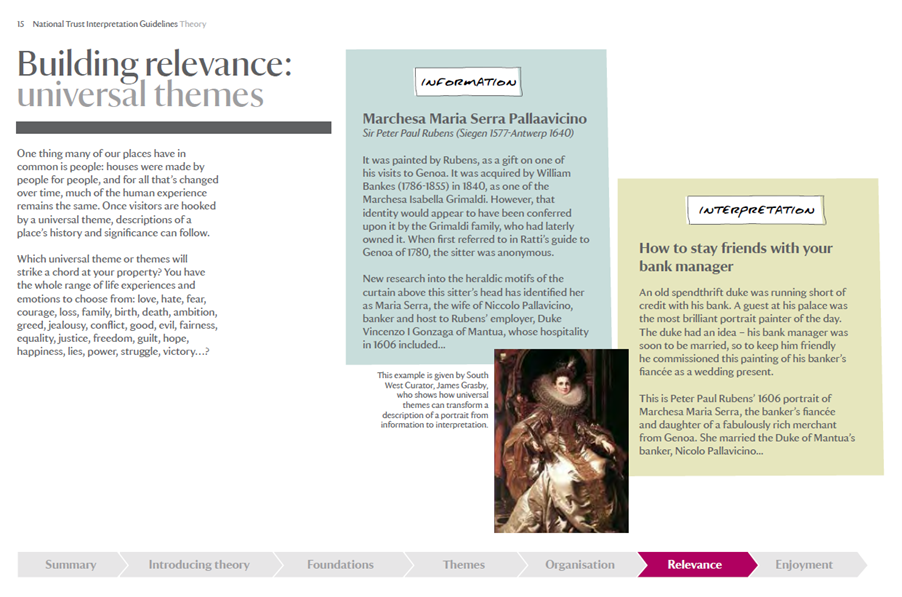
Through interpretation, understanding; through understanding, appreciation; through appreciation, protection.
What is great interpretation?
An interpretation plan starts with the audience. Who are the people who are visiting our places? Why do they come? What do they want from a visit? Great interpretation:
- Relates – like the example from Hardwick Hall, hanging modern women’s portraits in the picture gallery and hearing their voices (We are Bess)
- Reveals – see the painting example above
- Provokes – Tate shared Exile, an installation at Kingston Lacy which told the moving story of William John Bankes and how he had to flee the country because of his sexuality
- Explains – such as offering access to rooves to understand more about why repairs are needed and why such conservation work costs money (Lifting the Lid at the Vyne)
Sam Ham is another interpretation guru and we learned from him that there is so much going on in people’s lives and as heritage organisations we have to earn their time and trust. And we need to understand what society is thinking and what is relevant.
Good interpretation is about getting all the details right whilst looking for relevance and meaning.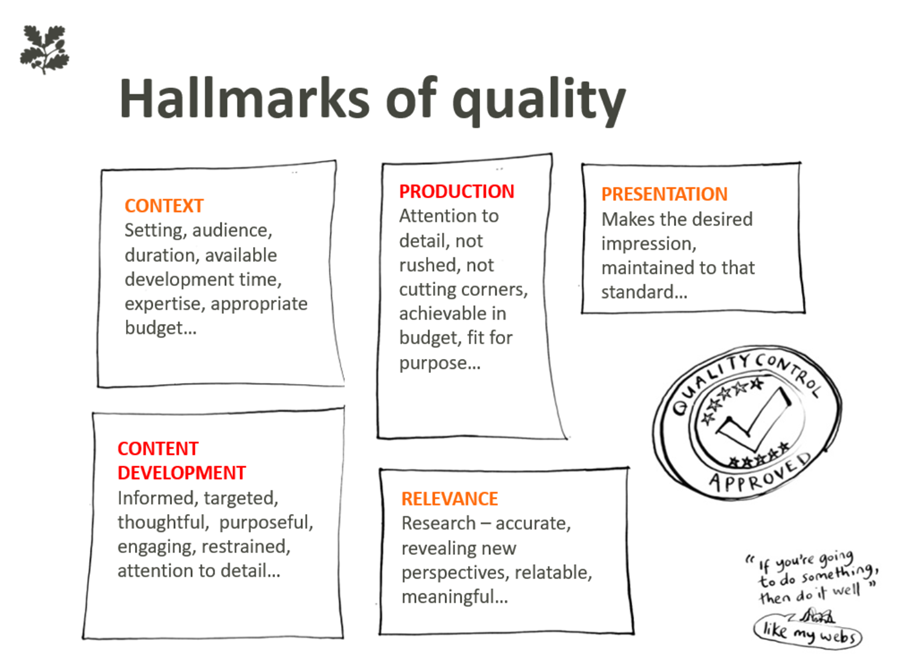
Interpretation attempts to communicate in a thought-provoking way to an audience that is entirely free to ignore it.
7 principles for interpretation
- Are we creating the right first impression?
- Does the spirit shine through?
- Does the visit appeal on different levels?
- Does every detail count?
- Can the place speak for itself?
- Are there reasons to return?
- Are we stretching and surprising people?
Where to start? How to write an interpretation plan?
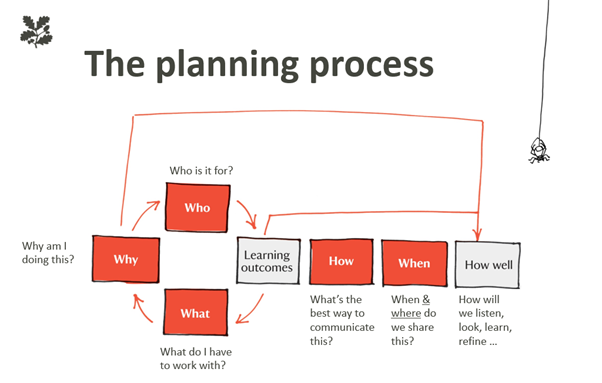
The National Trust uses this simple map to guide its interpretation planning. Whether that’s a one-off intervention or a full-scale programme. You can change the order of the questions but it’s a good idea to start with ‘why, what or who’. And not to be tempted to start with ‘how, when or where’.
It is important to agree the aims of the project. It is about increasing meaning and understanding of a particular story or growing reach (like attracting new audiences) or developing the visitor business (like bringing people to a particular area at a particular time)?
This is about deciding what is important and what you want to share. These decisions can be based on your ‘spirit of place’ document, the collection, points of interest, assets or topics.
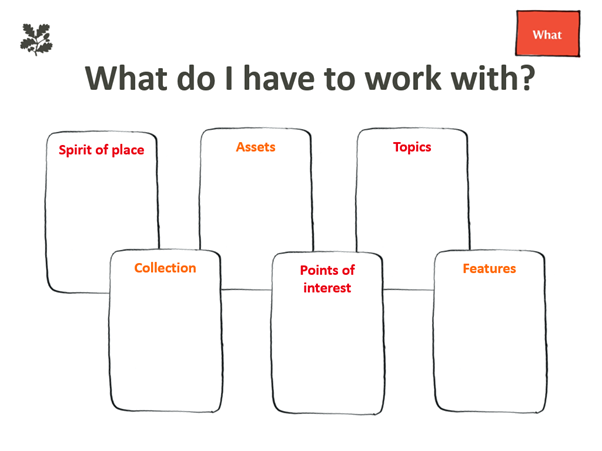
You might want to focus on overlooked parts of the property and don’t forget to consider restrictions like ongoing maintenance projects.
Everyone processes the world differently. We bring a lot with us when we visit a heritage site. Our personal values, beliefs, past life experience. And we react to incoming stimulus in different ways. We can do our best to engage our chosen target audience but we can’t always interest everyone all the time, which is OK too.
“Effective learning leads to change, development and the desire to learn more.”
Through our interpretation we can encourage people to respond to nature or to take action or to change the way they think about things. We cannot rely on visitors being motivated to read text panels, so we need to engage in different ways.
Interpretation needs to strike a balance between what heritage sites want to achieve and what visitors want to experience. This is where you will find relevance and unlock meaning.
Five keys to relevance
Surveys show that visitors are particularly interested in people stories. And these can be divided into five themes.
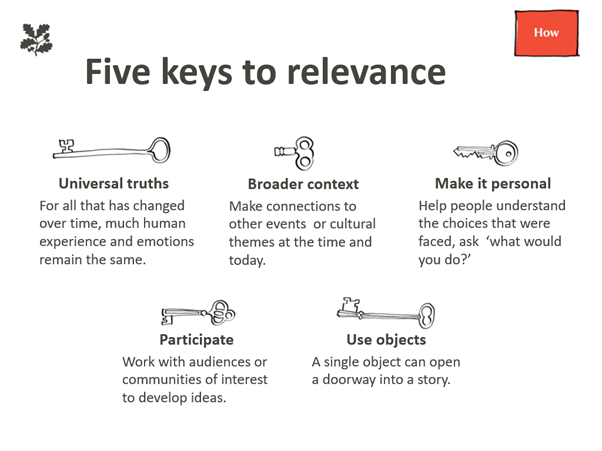
Universal truths are things like love and death. The broader context could be the political or financial situation. Making it personal means people have to ask what they would do. By engaging other groups, we can develop new ideas and approaches. And we can unlock stories by focussing on individual objects.
That’s all very well but how to do it?
There are many different interpretative techniques. Some are summarised in the image below.
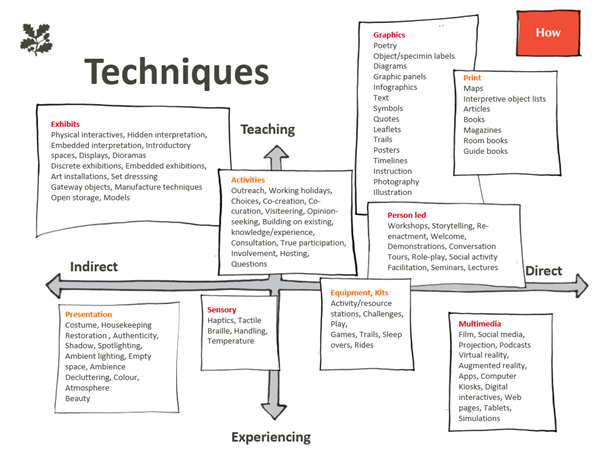
We find that many places jump into the top right corner, focussed on direct, taught methods of interpretation. But there is value in trying all of these – although not perhaps at the same time!
And when it’s all up and running …
Don’t forget to evaluate! These days properties might install something temporary and low-cost before committing to a more expensive piece of new interpretation so that they can test audience responses first.
Thank you to Tate for running this excellent workshop and to all our Innocastle partners: National Institute of Heritage in Romania (lead partner), University College Ghent in Belgium, Province of Gelderland in the Netherlands, Regional Government of Extremadura in Spain and the National Trust in the United Kingdom of Great Britain and Northern Ireland (knowledge partner, through INTO).
The project is financed by Interreg Europe, with a total budget of €1,120,335.00 (85% ERDF, 15% co-financing).
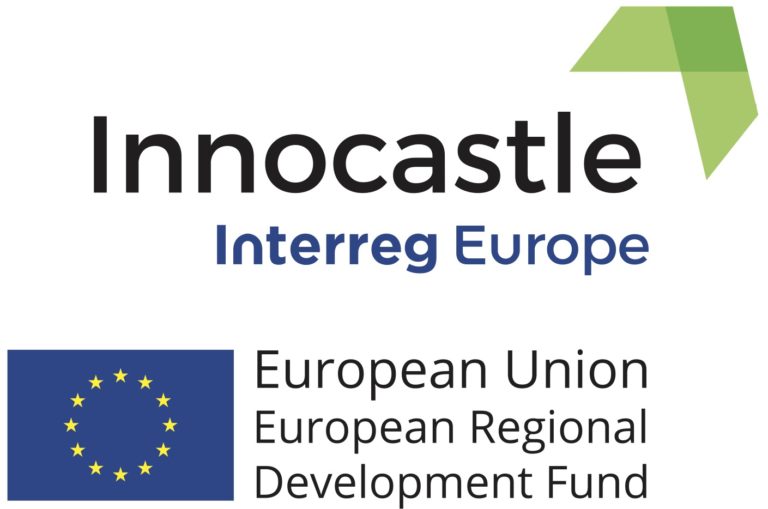
Innocastle best practices

Increasing visibility of heritage sites through cultural programming
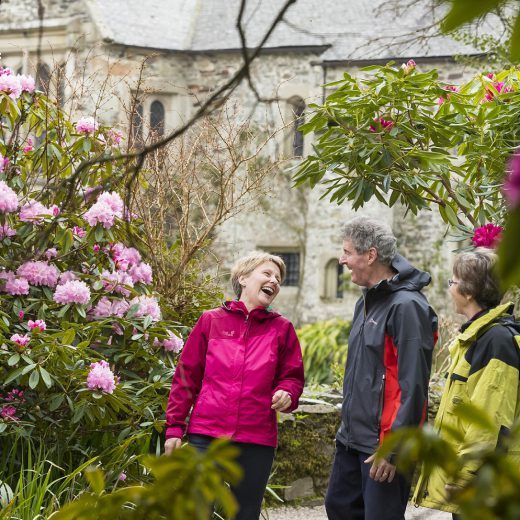
Social prescribing in the heritage sector
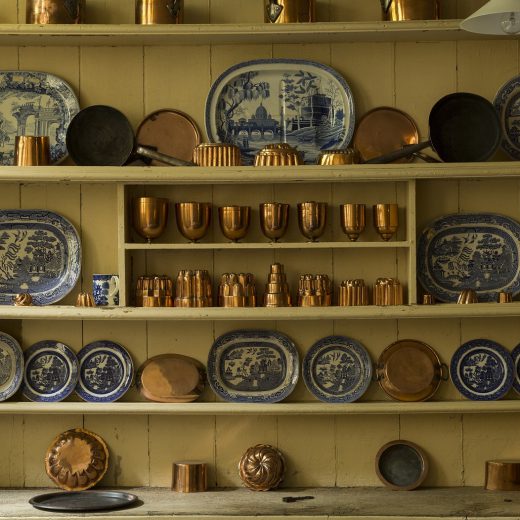
Digitising historic collections
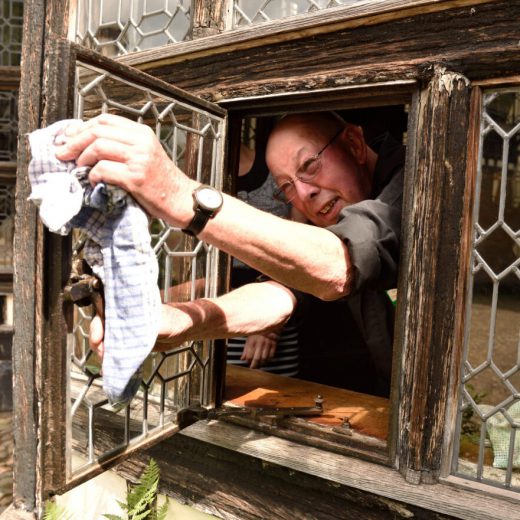
A mix of visiting and volunteering
